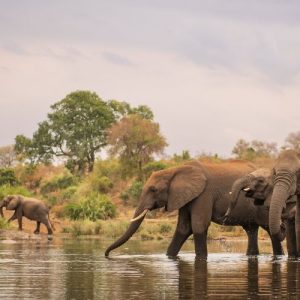There is something undeniably powerful about standing at the edge of the world. Both the Arctic and Antarctica offer the kind of raw, untouched beauty that few places on Earth can match. Icebergs the size of cities, remote wildlife encounters, endless daylight or complete darkness, depending on the season. These are not just trips. They are life-list experiences.
At Back Track Adventures, we’ve helped countless travellers turn their polar dreams into reality. But when it comes to choosing between the Arctic and Antarctica, it’s not always an easy decision. Both are extraordinary, but they offer different experiences. So which one is right for you?
This guide takes a side-by-side look at the Arctic and Antarctica across four key areas: wildlife, landscapes, activities, and the type of traveller each one suits best. Whether you are seeking penguins or polar bears, ancient cultures or a sense of complete isolation, this comparison will help you decide which polar region should be next on your list.
Wildlife: Penguins vs Polar Bears

Wildlife is a major reason many people travel to the poles. But what you’ll see in each place is very different.
Antarctica is known for its staggering numbers of penguins. From the moment you step ashore, you are likely to be surrounded by thousands of them. Gentoo, chinstrap, Adélie and king penguins are commonly seen, depending on the region and time of year. You may also encounter Weddell, leopard and crabeater seals, as well as humpback, minke and orca whales. Birdlife is also abundant, with petrels, skuas and albatross gliding overhead. Wildlife in Antarctica is generally more predictable, and expedition teams know where established penguin colonies are. While nothing in nature is ever guaranteed, penguin sightings are almost always part of the experience.
In contrast, the Arctic is the only place on Earth where you have a chance to see polar bears in the wild. This is their realm, and spotting one walking across the ice is an unforgettable moment. However, sightings are never guaranteed, and polar bears are typically observed from a distance of at least 500 metres due to strict regulations. Wildlife in the Arctic can be harder to find, and encounters may be more fleeting. Still, the Arctic is also home to walrus, Arctic foxes, musk oxen, reindeer and beluga whales. Birdlife includes puffins, guillemots and snowy owls.
If you want to witness huge colonies of penguins and dramatic whale sightings, Antarctica delivers. If you’re keen for the possibility of seeing polar bears and a broader range of northern wildlife, the Arctic offers that chance.
Landscapes: Icy Continents vs Frozen Oceans
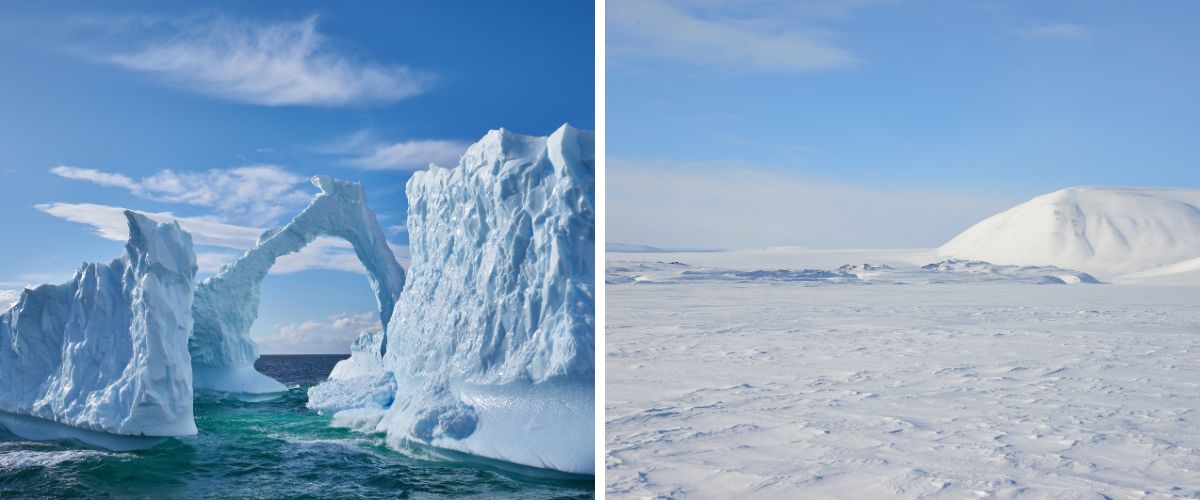
The Arctic and Antarctica are both cold, remote and ice-covered, but they are fundamentally different in structure and feel.
Antarctica is a vast landmass, a frozen continent surrounded by ocean. It is home to the largest ice sheet in the world, with towering glaciers, jagged icebergs, and dramatic mountains rising straight from the sea. The scale of the landscape is humbling. There are no trees, no towns and no permanent human inhabitants. It is nature at its most pristine.
The Arctic, on the other hand, is ocean surrounded by land. It includes parts of several countries, including Norway (Svalbard), Canada, Greenland, Russia and Alaska. This means the Arctic has more human history, more variation in terrain, and a mix of icy seascapes and tundra. You might see glaciers tumbling into fjords, ice floes drifting across the sea, or even the northern lights dancing overhead, depending on when and where you travel.
Antarctica offers remote, otherworldly beauty. The Arctic is wild in a different way, with a greater diversity of landscapes and seasonal contrasts.
Activities: Zodiacs, Ice Hikes and Cultural Encounters
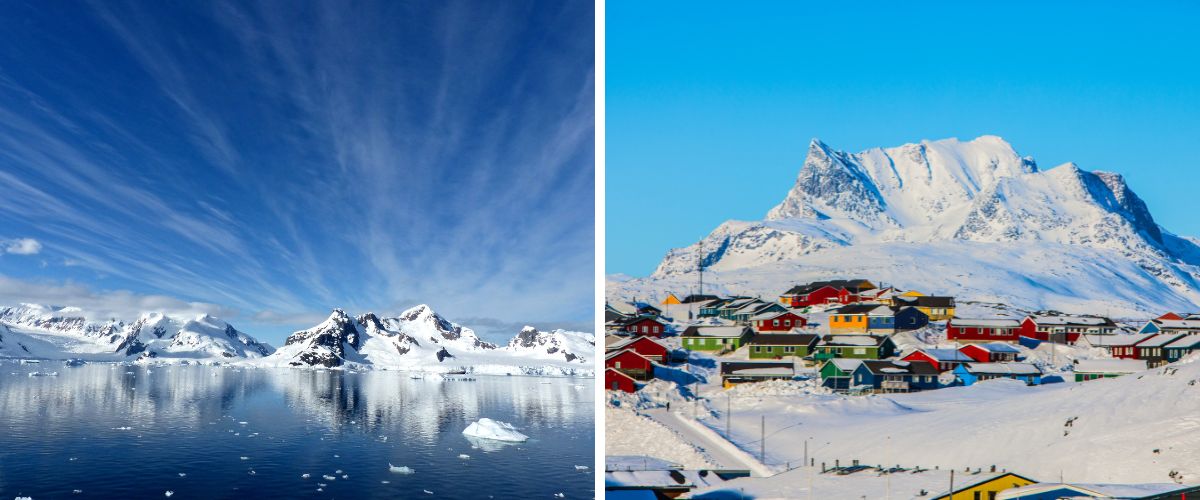
Both polar regions are best explored by small expedition ship, often with a team of guides, naturalists, historians and scientists on board. Your days will typically include excursions by Zodiac, shore landings and optional hikes, with lectures and wildlife watching during sea time.
In Antarctica, the focus is on immersive nature experiences. You’ll explore remote islands, walk among penguins, and cruise around sculpted icebergs. Some trips offer kayaking, snowshoeing or even overnight camping on the continent itself. There is no local culture or population to interact with, so the experience is entirely focused on the environment.
In the Arctic, you get both nature and cultural depth. In places like Greenland and Canada’s Northwest Passage, you may visit local, indigenous communities and learn about how people have lived in harmony with the land for centuries. Arctic cruises often include hiking, wildlife spotting and, in some regions, visits to historical sites and old whaling stations. In Svalbard, your itinerary may be shaped by ice and animal movements, but always includes expert-led excursions and breathtaking coastal walks.
If you’re looking for untouched nature and wildlife in its purest form, Antarctica is ideal. If you want a mix of wilderness, history and culture, the Arctic adds that extra layer.
What Type of Traveller Suits Each Destination?
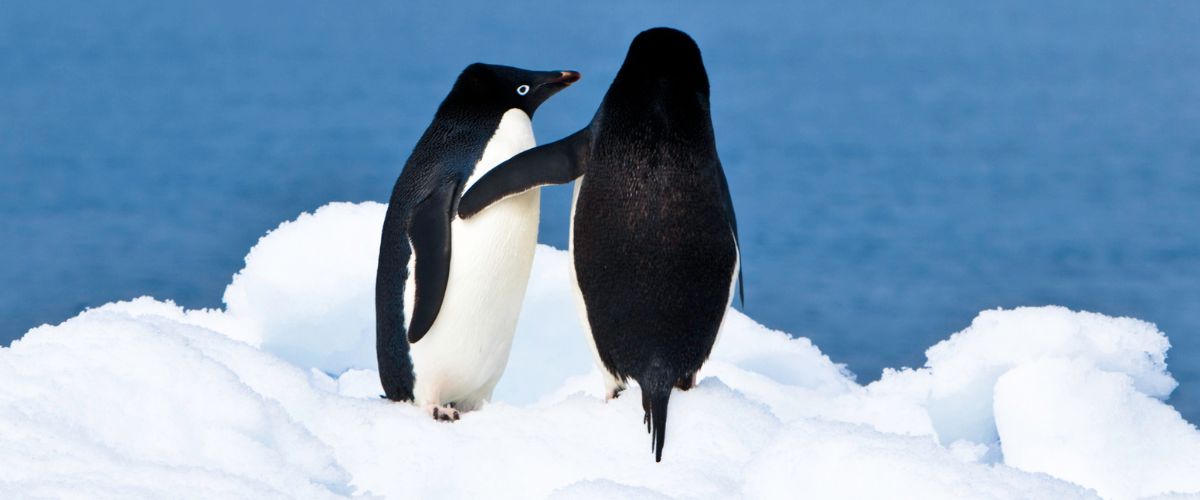
Choosing between the Arctic and Antarctica often comes down to personal interests and travel style. Here’s a simple breakdown of who each destination suits best.
Choose Antarctica if you:
- Want a feeling of true isolation and remoteness
- Are drawn to vast, icy landscapes and abundant marine wildlife
- Want to witness penguin colonies and whales up close
- Value raw nature and minimal human influence
- Prefer a trip focused entirely on the environment
Choose the Arctic if you:
- Want to see polar bears in the wild
- Are curious about Indigenous cultures and local communities
- Enjoy more varied terrain and seasonal colour
- Prefer trips that include history, storytelling and cultural interaction
- Want to see the northern lights (in some parts and seasons)
The good news? You can’t go wrong with either. They both offer once-in-a-lifetime travel experiences that will stay with you long after you return.
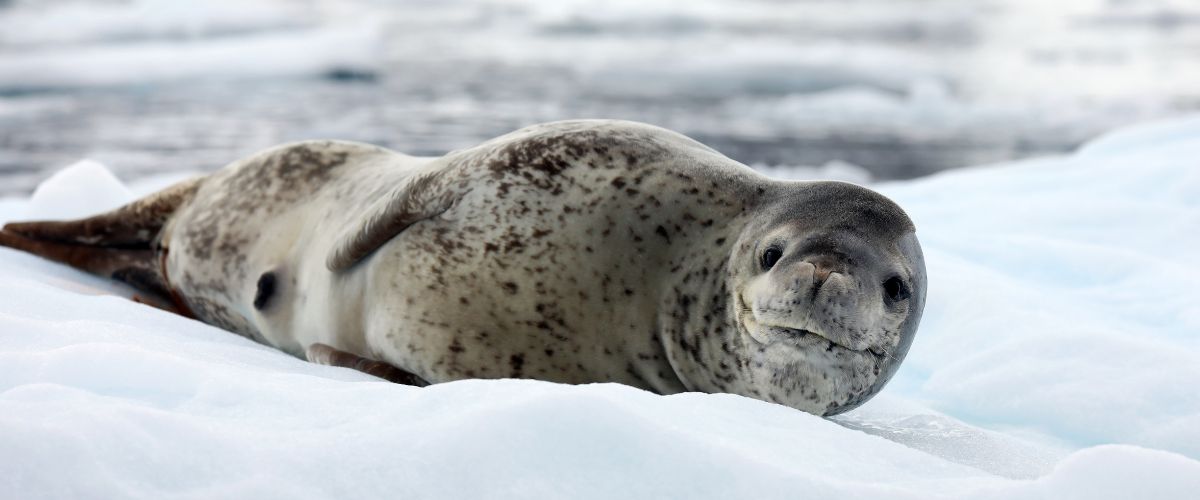
When to Go
Antarctica’s travel season runs from November to March. Early in the season, the ice is at its most pristine, and penguins are nesting. December and January are peak months for wildlife activity, with longer daylight hours. February and March are best for whale sightings.
The Arctic season is from May to September. Earlier in the season offers good snow coverage and the chance to see polar bears on the ice. Mid-season brings 24-hour daylight, migrating birds, and great hiking. Late in the season is ideal for the northern lights in places like Greenland and northern Norway.
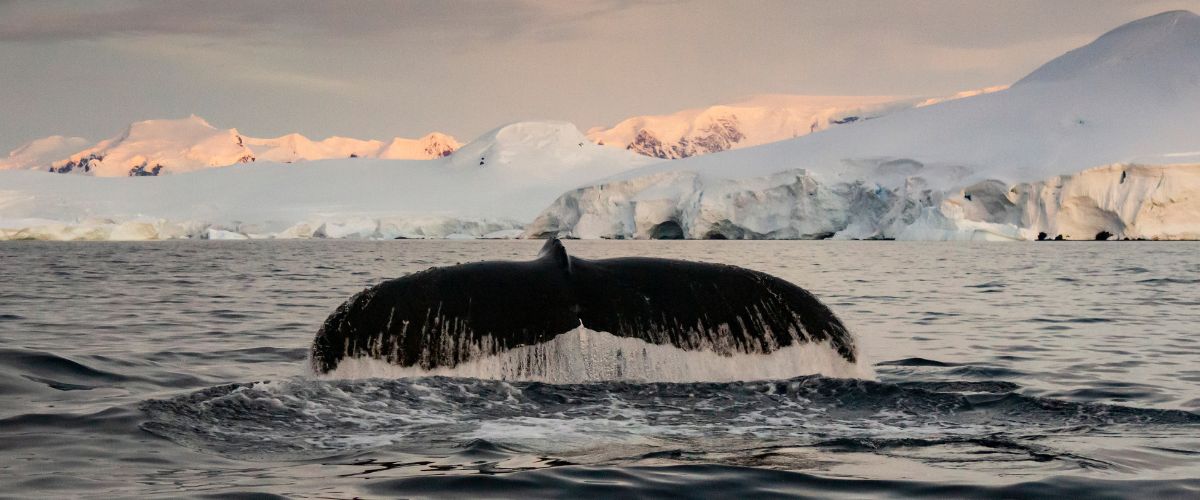
Plan Your Polar Journey with Back Track
Whether you are dreaming of standing on the Antarctic Peninsula or seeing your first polar bear on the ice edge, Back Track Adventures can help you choose the right journey, expedition ship and season. We work with trusted polar operators and expedition leaders who are passionate about the regions they explore.
We’ll guide you through the options, help you find the right itinerary, and make sure you are fully prepared for a safe and unforgettable trip. From solo travellers and couples to photographers and wildlife lovers, we’ve helped hundreds of travellers experience the magic of the poles.
If you’re ready to plan a polar expedition, get in touch with the team at Back Track. Your next great journey could be heading north or south. We’ll help you decide which one comes first.

